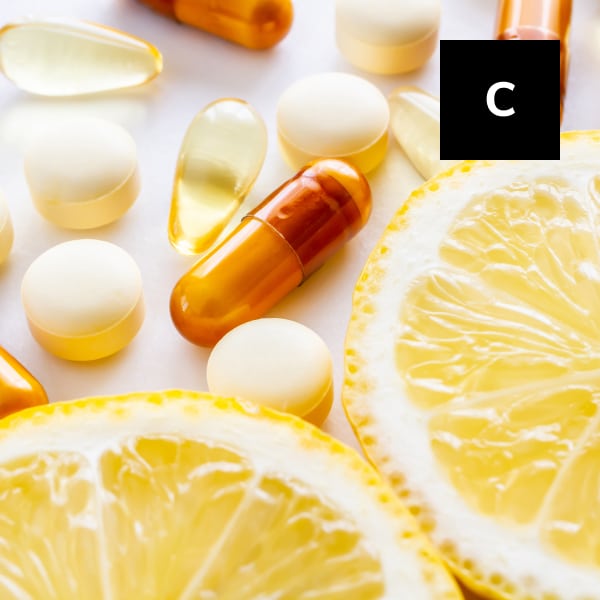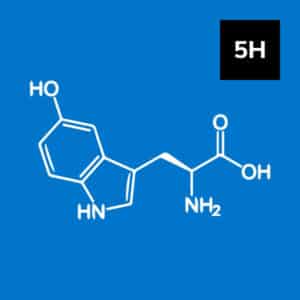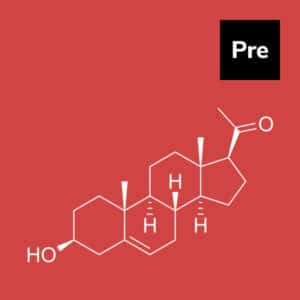Overview
Vitamin C (ascorbic acid or calcium ascorbate) is the body’s principal water-soluble antioxidant, making it a critical component of the immune system’s defense against germs and viruses. Additionally, it aids in the protection of unsaturated fatty acids and fat-soluble vitamins A and E against oxidation, thereby preserving their effectiveness.
Vitamin C cannot be synthesized by the body and must thus be received from diet and supplements. Vitamin C is a protective vitamin that is necessary for overall body health. It aids in the production of collagen and the maintenance of healthy skin; promotes wound healing, scar tissue formation, and fracture healing; strengthens blood vessels; prevents and treats the common cold; the body utilizes iron and folic acid; supports the thymus gland and increases T-cell production, increasing resistance to viral and bacterial infections.
Key Benefits
- Provides significant antioxidant protection
- Contributes significantly to immunological support
- Assists in the formation of collagen and the maintenance of healthy skin and blood vessels
- Aids in wound healing
- Enhances the strength of blood vessels
- Contributes to the prevention and shortening of the duration of the common cold
- Promotes dental and gum health
- Contributes to the body’s iron and folic acid use
- Supports healthy function of the thymus gland
- Increases T-cell production, resulting in increased resistance to viral and bacterial infections, as well as some allergies.
- Helps increase interferon levels
- Contributes to a healthy cardiovascular system
History of Usage
James Lind, a Scottish physician, found in 1757 that fresh citrus fruits may help avoid scurvy. As a result, sailors in the British navy were required to consume citrus fruits. Later that year, in 1907, Axel Hoist and Alfred Frohlich hypothesized that the fruit contained a unique component with health benefits. Vitamin C was named by Casmir Funk in 1912.
Vitamin C was discovered in 1928 by Dr. Albert Szent-Gyorgyi, a Hungarian professor of medicinal chemistry, while performing investigations on citrus fruits. By combining citrus juice with the plant enzyme peroxidase, he discovered that the extracted chemical, dubbed hexuronic acid, was capable of reversing plant browning, or oxidation. Hexuronic acid was dubbed ascorbic acid — vitamin C — because of its antiscorbutic (scurvy-fighting) effects.
Linus Pauling’s overall finding that vitamin C has physiological effects on the common cold was significant, since it opposed the widely held belief that vitamin C’s primary physiological effect on humans is to prevent scurvy. After he wrote vitamin C and the Common Cold in 1970 and co-authored Cancer and vitamin C with British cancer surgeon Ewan Cameron in 1971, the general use of supplemental vitamin C surged. Pauling pushed for the use of high-dose vitamin C in the treatment of cancer, heart disease, and other health problems, and he took three grams daily.
Vitamin C is now commonly used by individuals of all ages worldwide. Supplements containing vitamin C are available in a variety of formats, including capsules, tablets, juices, health drinks, powders, and cosmetics.
Biochemistry
Vitamin C is a six-carbon sugar with a similar structure to glucose. Vitamin C, in its biologically active form, acts as a reducing agent and coenzyme in a variety of metabolic pathways.
In humans, an external source of ascorbic acid is essential for collagen production and tissue repair by acting as a cofactor in the posttranslational generation of 4-hydroxyproline in collagen and other protein -Xaa-Pro-Gly- sequences. In the organism, ascorbic acid is reversibly oxidized to dehydroascorbic acid. Both of these vitamin variants are thought to be involved in oxidation-reduction processes. Vitamin B6 is involved in tyrosine metabolism, folic acid conversion to folinic acid, glucose metabolism, lipid and protein synthesis, iron metabolism, infection resistance, and cellular respiration.
Vitamin C is not synthesized or stored by the human body. Because vitamin C is a water-soluble vitamin, it dissolves in water and is excreted in the urine. To maintain adequate vitamin C consumption, you must consume citrus and other vitamin C-rich fruits and vegetables and/or take a vitamin C supplement.
Scurvy, a disease marked by anemia, bleeding gums, bruising, and delayed wound healing, can arise from severe vitamin C deficiency.
Citrus fruits, berries, potatoes, tomatoes, peppers, cabbage, Brussels sprouts, broccoli, and spinach all contain vitamin C.
Vitamin C’s recommended daily allowance (RDA) for adults is 90 milligrams for males and 75 milligrams for women. The majority of health practitioners, however, recommend taking a greater dose to avoid illness and disease. Vitamin C is difficult to overdose on, since excess levels are eliminated in the urine.
Recent Trends
Vitamin C is employed in a variety of industries, including pharmaceuticals, nutraceuticals, cosmetics, and personal care. Numerous skincare product manufacturers are stepping up to incorporate a strong selection of vitamin C serums and solutions in their portfolios in order to meet massive global demand. Additionally, it is incorporated into innovative beverages that contain protein, amino acids, and other vitamins.
According to SPINS (Chicago) data on the mainstream dietary supplement channel in the United States, vitamin C sales (excluding the prominent patented Ester-C brand) increased 61.8 percent to $576 million during the 52 weeks ended November 29, 2020. During that time period, Ester-C sales in the mainstream channel increased 48.9 percent to $216 million. Meanwhile, in the United States, sales of vitamin C (not Ester-C) through the natural supplement channel increased 70.7 percent to $44 million over that time period, while sales of Ester-C increased 41.5 percent to $17 million.
Within the mainstream cold-and-flu category in the United States, vitamin C generates nearly twice the revenue (at $408 million) as other immune-supporting compounds such as elderberry ($223 million), echinacea ($180 million), and zinc ($32 million).
Precautions
A daily upper limit intake (UL) of 2 g (2,000 mg) is recommended to avoid diarrhea and gastrointestinal problems in otherwise healthy persons.
Consuming sufficient vitamin C to achieve plasma concentrations of at least 60 mol/L is supported by evidence from metabolic, pharmacokinetic, and observational studies, as well as randomized controlled trials. While the majority of generally healthy young adults may obtain these plasma concentrations by consuming at least 200 mg of vitamin C daily, certain individuals may have a lower vitamin C absorption capacity than what is currently recorded.
The Linus Pauling Institute recommends that individuals consume 400 mg of vitamin C daily to maintain adequate tissue concentrations – a dose far greater than the recommended daily allowance for adults, but with no risk of side effects.
References
- Camarena V, Wang G. The epigenetic role of vitamin C in health and disease. Cell Mol Life Sci. 2016;73(8):1645-1658.
- Jariwalla RJ, Harakeh S. Mechanisms underlying the action of vitamin C in viral and immunodeficiency disease. In: Packer L, Fuchs J, eds. Vitamin C in Health and Disease. New York: Macel Dekker, Inc.; 1997:309-322.
- Carr AC, Maggini S. Vitamin C and immune function. Nutrients. 2017;9(11).
- Ashor AW, Lara J, Mathers JC, Siervo M. Effect of vitamin C on endothelial function in health and disease: a systematic review and meta-analysis of randomised controlled trials. Atherosclerosis. 2014;235(1):9-20.
- Hemilä H. Vitamin C supplementation and the common cold–was Linus Pauling right or wrong? Int J Vitam Nutr Res. 1997;67(5):329-35. PMID: 9350474.
- Shiref H and Sahai M (2020) Albert Szent-Györgyi—The Scientist Who Discovered Vitamin C. Front. Young Minds. 8:19. doi: 10.3389/frym.2020.00019
- Frei B, Birlouez-Aragon I, Lykkesfeldt J. Authors’ perspective: What is the optimum intake of vitamin C in humans? Crit Rev Food Sci Nutr. 2012;52(9):815-829.




